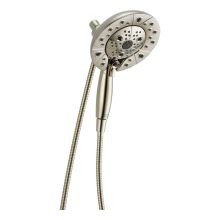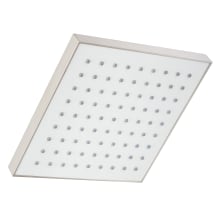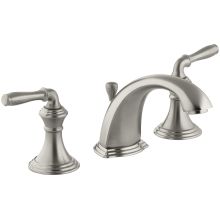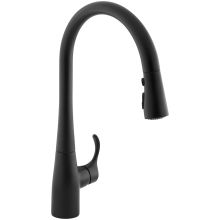How to Test the Water Pressure in Your Home
Don't overlook the signs of changing water pressure in your home.
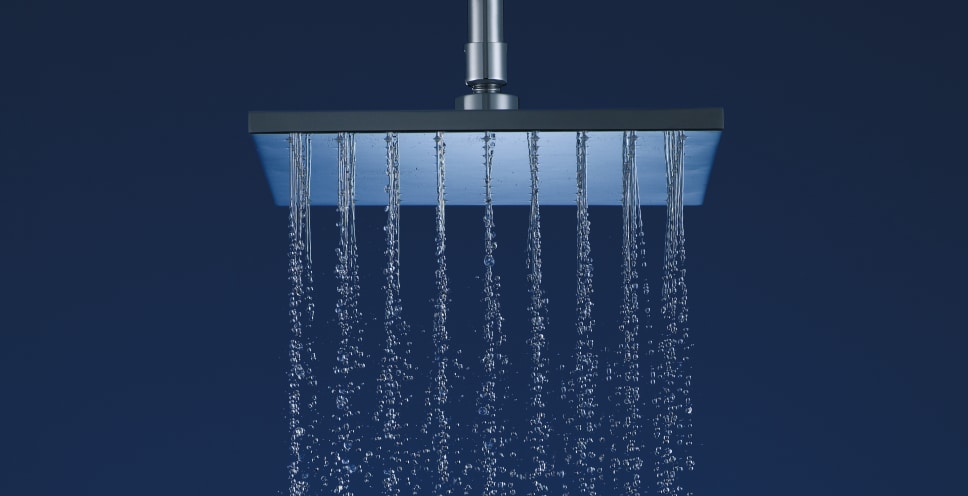
6 Signs It’s Time to Check the Water Pressure
Water is an important element in all homes. As a homeowner, you know that water pressure is important to pay attention to. There’s a balance that you have to keep. There must be sufficient water pressure for all of your household chores and activities. Without the proper water pressure, you can forget doing laundry, washing dishes, or taking comfortable showers.
However, if your pressure is too high, this can lead to stress on the pipes. Once this occurs, pipes can crack, burst and leave you with a flooded home. Now, there are quite a few ways to adjust and repair water pressure, but how do you know if your water pressure is too low or high? First, let’s look at some signs of unbalanced water pressure, and then learn how you can go about testing water pressure.

1. Check the Toilet
First things first, you should always check the toilet. Many problems with the water pressure are noticed through the everyday use of the bathroom throne. It’s surprisingly simple: look for how long it takes the toilet to refill after it’s been flushed. Too fast or too slow can indicate lurking problems that should be investigated. It should run under two minutes to refill the bowl to a usable level. If you discover that your toilet is taking more time than that, then you may have low water pressure in your home.
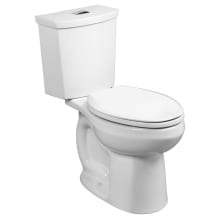

2. Shower Water Pressure Changes
Have you ever been taking a shower only to have it turn into dribble when someone flushes the toilet or turns on another water source? The water pressure is low if it’s being diverted from one fixture to another rather than holding steady between the two tasks. Even if you have an electric shower with a heating reservoir, your shower may turn off entirely when the pressure drops. This is usually a sign that there is a problem with the incoming water flow. When this happens, it usually won’t simply get better on its own. You have to be able to dig into how to fix the water pressure changes.

3. Slow Filling Bathtub
With a fully operational tub faucet, at a flow rate of 4 to 7 gallons per minute, a standard bathtub should take less than five minutes to fill up. Anything longer than this and you may have some concerns, not to mention cold water for bathing. While it might not seem like that big of a deal at the time, it’s important that you don’t ignore a low pressure system.
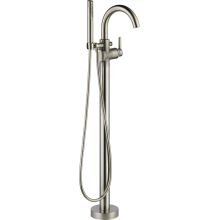
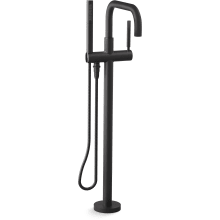

4. Slower Water Fall from the Tap
You should have sufficient pressure to wash your hands under the bathroom or kitchen sink faucet. If you turn the faucet on and get a few dribbles of water instead of a steady flow, it could be a clogged aerator, or it could be low pressure. It’s an easy fix to check the aerator for debris buildup that might be limiting the flow of water coming from the faucet. If there’s no buildup, you’re probably looking at a low pressure situation.
High Water Pressure
High water pressure is less common than low. However, this can still happen to your home. Multi-level homes are going to have reasonable fluctuations in pressure between the kitchen on the first floor and the bathroom on the third. In some cases, this might be because of your house’s location; if you live on a hill, gravity can cause water to flow faster through your pipes. Every home has its quirks and you should have a basic understanding of what is “normal” for your home. When the water pressure changes from the norm, there can be other reasons and other fixes for this problem.

5. Changes from the Tap
Of course, the opposite of a low pressure is high pressure, so you may find that the water is practically blasting out of the taps. You know better than anyone what your home’s water pressure is supposed to look like; if it’s suddenly flooding out of the faucets, you’ll see the difference. If that happens, make sure you check the aerator, because debris buildup on the mesh can clog the faucet outlet and channel the water flow to a smaller area with a little more force.
If the faucet is leaking and the tap won’t turn tight enough to make the dripping stop, it might be high water pressure forcing water through at a rate the faucet isn’t designed to handle. That annoying drip might be a helpful clue that there’s a problem.

6. Noise Against the Pipes
You may hear a banging sound against the pipes when there is water running. If you hear unusual sounds coming from your plumbing, it’s a signal that there is something wrong. People often overlook the fact that water is a fluid and, as such, has mass, which can act on surfaces with force; when the pipes are intended for a lower water pressure, an increased amount hammers at the plumbing. This eerie warning sound can cause leaks, breaks, and can wear down parts of fixtures and appliances.
Residential Water Pressure Gauge
With water pressure changes, you have a few different areas of consideration for the potential causes for change. Sometimes, however, a perfectly functioning home plumbing system has low water pressure because the water system operates at the whim of the city water company. Your home plumbing can only work with the pressure it is allowed from the source.
Many homes have a pressure reducing valve (PRV) installed on the line from the city water as an added protection against water fluctuation. You can check if your home has a PRV, usually near the household shut off valve, and, if so, you can manually adjust the PRV for more or less water pressure with a turn of the screw at the top of the valve.
Once the signs have been noticed within the house and all potential problem spots addressed, if there’s still a slowdown, then you can check the line to see what the water pressure psi - or the pounds-per-square inch - is coming into the home. It’s a good idea to know the psi for your home to accommodate any appliances that use water. If the psi required for an appliance is lower than that provided by the home lines, it creates additional wear on the appliances and can shorten their lifespan.
The easiest way to test your home’s water pressure is to use a water pressure gauge. These can be picked up at most hardware stores. Additionally, most of these come with adapters so that you can fit them to any water outlet or residential hose bib.
Decide on an Outlet
Once you have your water pressure gauge, you have to decide which water outlet to use. This can be a hose bib that is near your house’s water supply. If you have water that is provided by the city, then you want to hook it up as close to the water meter as possible. Likewise, if you own a well then you should use an outlet that is located near the well pressure tank.
Turn off all Water
Before you can test your water pressure, you need to make sure that you turn off all faucets and water-using appliances. This means refrigerators, water softeners and filters, washing machines, sprinklers, and even dishwashers. Keep in mind that you have to test the static pressure, which means you cannot have water moving throughout your house.
Remove Hose from Outlet
Next, remove the hose from the outlet. This will make it possible for you to screw on the pressure gauge. Most pressure gauges will have a rubber hose gasket that will make it easy to seal it to the fixture. Use your hand to tighten it at first. If you find that it leaks a little, feel free to grab a pair of pliers and tighten it further. It’s important that you don’t have any leaks. If there are leaks, you won’t be able to accurately read the psi.
Open Water Supply Valve
Once fitted, you can open up the water supply valve. Do this slowly!
How to Read the Gauge
Once full, watch the needle on the gauge. When it stops moving, then you can read it. Typical water pressure for urban areas should be between 35 and 170 psi, so check with your local water company to narrow down what your home system should be flowing at.
Having your water pressure at the proper psi is incredibly vital. On one hand, it makes things more convenient. It can be difficult to shower and take care of daily chores if the water isn’t running at its best. Likewise, a lot of problems can arise from high water pressure. When there’s high pressure, you may notice that your bill goes up. Also, it adds needless stress to your pipes, which can lead to expensive pipe damage. Not only is your plumbing at risk, but you could run the risk of your appliances wearing down early.
Maintaining proper water pressure throughout the home makes your daily tasks easier and ensures the longevity of the fixtures and appliances that depend on it. When it comes to water pressure, it's not that difficult to keep things flowing smoothly. If your home shows any warning signs that there might be a problem, a simple investigation and a psi gauge can save you money, time, and effort in the long run.

